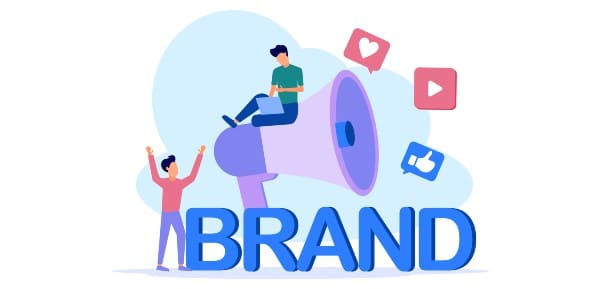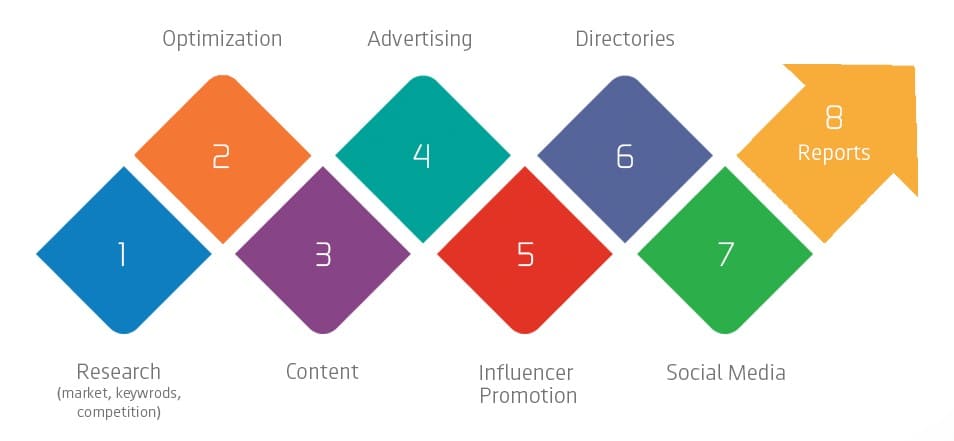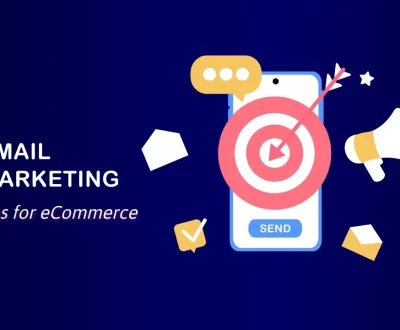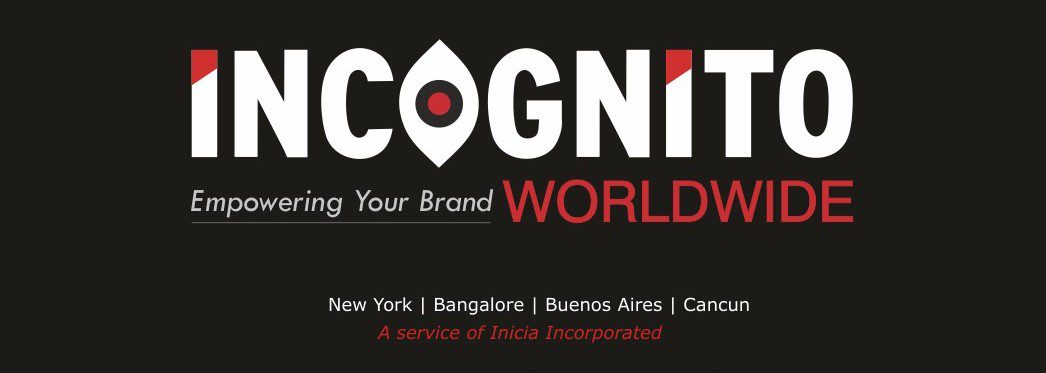The Power of Storytelling in Brand Development: A Look at the Narrative Map and Brand Bible
- February 18, 2024
- Biz Tips, Blog & News, Marketing
Storytelling in brand development has been a powerful tool used to captivate audiences and build connections. As noted in the book Breaking Boundaries: The Advanced Marketing Techniques Playbook, marketing is about one thing — telling a compelling story. Everything else is the way to tell it.

In the world of marketing, stories can shape perceptions, evoke emotions, and ultimately drive consumer behavior. In this blog post, we delve into the three most important concepts of storytelling — how to identify the “why” factor, develop compelling multi-message narrative mapping, and explore how it can be harnessed to elevate your brand’s identity and presence in the market.
It is essential to understand the three basic stages of the buyer’s journey to identify who your target customer is and speak to them.
Introduction to the Importance of Storytelling in Brand Development
Understanding the Narrative Map: What It Is and How It Works
A narrative map is a powerful tool in storytelling that can greatly impact brand development. It allows businesses to craft their brand story in a structured and engaging way, making it easier for consumers to connect with their brand on an emotional level. In this section, we will delve deeper into what the narrative map is, how it works, and why it is essential for effective storytelling.
To put it simply, the narrative map is a visual representation of a story’s structure. Just like a traditional map helps us navigate our physical surroundings, the narrative map helps us understand the journey of a story. It outlines the key elements that make up a compelling story – from the protagonist and conflict to the resolution and overall message.
So how does it work? The narrative map typically follows a linear structure and consists of three main parts: exposition, rising action, and climax. In the exposition phase, we are introduced to the characters and setting of the story. This lays down the foundation for understanding who or what we should care about in the story.
Next comes the rising action where events start to unfold and tensions rise. This is where we get emotionally invested in what happens next as conflicts arise, challenges are faced, and obstacles are overcome by our protagonists. The rising action eventually leads us to the climax -the turning point or most intense moment of tension in the story.
After reaching its peak at the climax, there is usually an immediate sense of relief as we move toward resolution or denouement in storytelling terms. This final stage brings closure to any loose ends from earlier conflicts while leaving behind lasting impressions through key takeaways or lessons learned.
However simple this may seem on paper; crafting an effective narrative map requires careful consideration of each element’s placement within your brand’s overall story. A well-executed narrative map should engage audiences by pulling them along on an emotional journey while simultaneously communicating your brand’s core values.
Ultimately, understanding how to use this tool effectively can significantly impact a brand’s development. By using the narrative map as a guide, businesses can create compelling and cohesive brand stories that resonate with their target audience. This results in increased brand awareness, loyalty, and overall success in achieving business goals.
The narrative map is an essential component of storytelling that helps brands connect with consumers on a deeper level. It provides structure and guidance in crafting a powerful and engaging story that leaves a lasting impression. Now that we have explored what it is and how it works let us move on to explore its practical applications in brand development.
The Key Elements of a Strong Narrative Map for Branding
The key elements of a strong narrative map for branding are crucial in creating a successful and impactful brand story. Storytelling has become an essential tool for brands to connect with their audience on a deeper level, and the narrative map serves as the backbone of this storytelling process.
The first element of a strong narrative map is establishing a clear protagonist or main character. This character should be relatable and represent the values and beliefs of the brand. By having a well-defined protagonist, the audience can easily identify with them and become emotionally invested in their journey.
Another crucial element is the setting. The setting provides context to the story, and it plays a significant role in shaping the overall narrative. The setting should complement the brand’s identity and add depth to the story, making it more immersive for the audience.
Next is conflict. Conflict is what drives any compelling story forward, and it also applies to branding narratives. A good conflict creates tension, piques curiosity, and keeps the audience engaged until they resolve. Conflict can be anything from overcoming obstacles to facing internal struggles within the protagonist.
One often overlooked but critical element is authenticity. In today’s world, consumers are looking for genuine stories that align with their values. Therefore, brands need to ensure that their storytelling is authentic to their brand identity. Any inconsistencies or insincerity in storytelling can lead to distrust among consumers.
The next vital element of a strong narrative map is emotional appeal. Emotions have been proven to be powerful motivators, so incorporating them into your brand’s storytelling can evoke feelings such as joy, sadness, fear, or empathy in your audience – making your story more impactful.
Another important aspect of crafting a strong narrative map is pacing. Pacing refers to how quickly or slowly events unfold in your story – too fast-paced or too slow-paced stories can fail to captivate an audience effectively. Brands must find balance when it comes to pacing and ensure that the story flows naturally.
A strong narrative map should have a clear resolution. The resolution is the result of the protagonist’s journey – it can be a happy or bittersweet ending, but it should tie up any loose ends and provide closure for the audience.
Creating a strong narrative map for branding requires careful consideration of these key elements. By incorporating them into your brand’s storytelling, you can create an emotional connection with your audience that can leave a lasting impression and build brand loyalty.
Creating A Compelling Brand Bible

The brand bible is a narrative guide for potential clients and customers to understand the essence of your brand. A brand bible is essentially a document that outlines all vital information about your brand, including its opening statement, values, mission, visual identity, tone of voice, and more.
Customers buy the “Why” not the “What. Identifying how your product or service impacts them. Customers are less concerned about what your product or service is as much as they’re interested in “What’s in it for me?”
The first step in creating a compelling brand bible is to establish a clear understanding of your brand’s story. This involves identifying the purpose and vision behind your brand, what sets it apart from others in the market, and how it aligns with your target audience’s needs and desires. It is crucial to have a strong foundation for your brand’s story as it will serve as the guiding force in all future decisions related to branding.
Next, you need to define the key elements that make up your brand identity. This includes establishing your unique selling point (USP), defining your target audience demographics and psychographics, and determining what emotions you want to evoke through your branding efforts. These elements are crucial in shaping the narrative of your brand’s story and making it relatable to potential customers.
Visual identity plays a significant role in storytelling within branding. Your logo design, color palette, font choices, and other visual elements should be aligned with the overall message of your brand’s story. Consistency in visual identity across all marketing channels helps reinforce the narrative map of your brand.
The tone of voice is another crucial aspect of creating a compelling brand bible. How you communicate with customers through various touchpoints such as social media posts or website copy can greatly impact their perception of your brand. Therefore, it is important to establish guidelines on tone and language that reflect the personality of your brand consistently throughout all communications.
A well-crafted storyline includes incorporating real-life experiences or testimonials from satisfied customers into the narrative map. By showcasing how others have benefitted from using your product or service, you can establish trust and credibility with potential customers.
The brand bible is the foundation for your brand’s identity, guides future branding decisions, and creates a consistent narrative that resonates with your target audience. By following the steps outlined above, you can create a powerful and impactful brand bible that will elevate your brand’s storytelling efforts.
Successful Case Studies
In this section, we will delve into case studies of some well-known brands that have successfully used storytelling to enhance their development and create a strong emotional connection with their customers.
- Nike: Nike is a prime example of a brand that has effectively utilized storytelling in its development. The brand’s iconic “Just Do It” slogan was inspired by the final words of Gary Gilmore, an American criminal facing execution. Nike’s founder Phil Knight saw these words as a call to action and incorporated them into the brand’s marketing campaigns, creating a powerful narrative around determination and perseverance. This message resonated with consumers from all walks of life, making Nike more than just a sports apparel company but also an embodiment of the human spirit.
- Airbnb: Airbnb has revolutionized the way people travel by offering unique and personalized experiences through its home-sharing platform. However, it wasn’t just the business model that made Airbnb successful; it was also their clever use of storytelling in their branding efforts. The company created a campaign called “Belong Anywhere,” which focused on creating connections between travelers and locals through shared experiences. Through heartwarming stories from both hosts and guests, Airbnb showed how they were not just providing accommodations but also facilitating meaningful connections between people.
- Dove: Dove’s “Real Beauty” campaign is another powerful example of using storytelling for brand development. The beauty industry has long been criticized for perpetuating unrealistic standards of beauty, but Dove challenged this narrative by showcasing real women instead of models in their ads and celebrating different body types, ages, races, and backgrounds. This message struck a chord with consumers who were tired of feeling inadequate compared to impossible beauty standards promoted by other brands.
- Ben & Jerry’s is well-known for its delicious ice cream flavors, but the brand has also become synonymous with social activism. From supporting environmental causes to promoting social justice, Ben & Jerry’s has built a strong brand identity by using storytelling to highlight their values and engage with their audience. Their “If It’s Melted, It’s Ruined” campaign focused on climate change and urged consumers to take action against it. By aligning their brand with important societal issues, Ben & Jerry’s has created a loyal customer base that not only loves their ice cream but also supports their values.
These case studies demonstrate how storytelling can be used effectively in brand development to create an emotional connection with customers and differentiate a company from its competitors. By tapping into human emotions and experiences, brands can build a powerful narrative that resonates with consumers and drives their success.
Tips and Techniques for Incorporating Storytelling into Your Brand Strategy

Storytelling has become a powerful tool in brand development, helping companies connect with their audience on a deeper and more personal level. It allows brands to share their values, mission, and purpose in a way that resonates with consumers and creates a lasting impression. However, incorporating storytelling into your brand strategy can be challenging. In this section, we will discuss some tips and techniques for effectively using storytelling in your brand strategy.
- Know Your Brand’s Story. This involves knowing the history of your company, what inspired its creation, and the journey it has taken to get where it is today. This will help you form the foundation of your brand’s narrative and give you a clear direction for crafting compelling stories.
- Understand Your Audience: To create an impactful story, you need to know who you are telling it to. Understanding your target audience is crucial as it helps you tailor your message to resonate with them emotionally. People didn’t gather in DC to hear Dr. King speak, they gathered because they believed what he believed and believed that being there would help change the world. Research their interests, beliefs, values, and pain points to better understand how they think and feel.
- Use Emotionally Charged Stories: Emotions play a significant role in decision-making processes; therefore, tapping into them through storytelling can have a profound effect on how consumers perceive your brand. Choose stories that evoke positive emotions such as joy, inspiration, or nostalgia as they are more likely to create a lasting impact on the audience.
- Be Authentic: Incorporating storytelling into your brand strategy requires authenticity; otherwise, consumers will see through any insincere attempts at connecting with them emotionally. Be genuine about the stories you share; they should reflect your company’s values and beliefs accurately.
- Assemble Your Narrative Map: A narrative map is an outline of all the key elements of your brand story – from the characters involved (your company) to the plot (your journey). It helps keep your storytelling consistent and focused regardless of whether it is an opening statement, a meme, features and benefits, or blog posts. Assemble all the important elements of your brand’s story into a cohesive narrative map that will guide you in creating compelling stories.
- Use Multiple Channels: This is how to effectively incorporate storytelling into your brand strategy, by using multiple channels to share your stories. These can include social media, blogs, videos, or even events. This allows you to reach a wider audience and engage with them on different platforms.
- Keep It Simple: The best stories are often simple and easy to understand. Avoid overcomplicating your brand’s story, as this can be confusing for consumers and dilute the impact of your message. Apple doesn’t tell their customers “We sell computers at “X” price, they tell them that if you “believe” innovative technology can be aesthetically beautiful, then we might be the brand for you — by the way, we sell computers, mobile devices, and wearable technology.
Incorporating storytelling into your brand strategy requires a deep understanding of your brand’s story and audience as well as authenticity in the stories you share. By following these tips and techniques, you can create compelling narratives that will help build strong connections with consumers and elevate your brand’s image.
Common Mistakes to Avoid When Using Storytelling
When it comes to using storytelling in brand development, there are certain mistakes that marketers and businesses should avoid. While storytelling is a powerful tool for creating a strong emotional connection with consumers, if not done correctly it can have the opposite effect and even harm the brand’s image. In this section, we will discuss some of the common mistakes that businesses make when using storytelling in their brand development strategy.
- Not Understanding Your Audience: One of the biggest mistakes businesses make when using storytelling is not understanding their target audience. Every brand has a unique customer base, and it is essential to understand their needs, values, and interests before crafting a story. Without knowing who you are telling your story to, it may fall flat or even offend your audience.
- Focusing Too Much on Selling: Storytelling should be subtle and authentic; if it feels like a sales pitch, then you’re doing it wrong. The primary purpose of storytelling in brand development is to create an emotional connection with customers rather than pushing products or services down their throats. Instead of focusing solely on selling, focus on building trust and establishing a relationship with your audience through compelling narratives.
- Lack of Consistency In the Core Messaging: Consistency is key in branding and storytelling alike. It is crucial to maintain consistency across all platforms where your brand’s story is being told – whether it’s social media posts, advertisements, or even packaging design. Inconsistency can confuse customers and dilute the impact of your narrative.
- Ignoring Visuals: Storytelling isn’t just about words; visuals play an equally important role in capturing people’s attention and conveying emotions effectively. Many brands make the mistake of neglecting visuals while telling their stories which can result in a less engaging experience for audiences.
- Lack of Authenticity: Consumers today are more aware than ever before; they can easily see through fake stories or exaggerated claims by brands trying too hard to appear relatable. Authenticity is crucial in storytelling – it helps build trust and credibility with your audience.
- Not Having a Clear Message: A good story needs to have a clear message that resonates with its audience. Without a central message, the story can become confusing and fail to leave an impact on consumers.
Using storytelling in brand development requires careful planning and execution. It is essential to avoid these common mistakes and instead focus on delivering authentic, consistent, and emotionally compelling narratives that will connect with your target audience and help establish a strong brand identity.
Build it and they will come is a myth, not a strategy
Bruce T. Dugan, Inicia Incorproated CEO
For an in-depth course in developing a marketing roadmap plan, including a deeper dive into narrative mapping, explore these resources:
Advanced Marketing Techniques (a 10-lesson e-course)
Breaking Boundaries: The Advanced Marketing Playbook (Paperback or Kindle)
Content Marketing | Design | Marketing | Consulting
Need help? Book a free consultation
Categories
Recent Posts
About us and this blog
We are a digital marketing company with a focus on helping our customers achieve great results across several key areas.
Request a free quote
We offer professional SEO services that help websites increase their organic search score drastically in order to compete for the highest rankings even when it comes to highly competitive keywords.
Subscribe to our newsletter!
More from our blog
See all postsComments are closed.










Pingback: The Power of Storytelling in Brand Development: A Look at the Narrative Map and Brand Bible - Inicia Incorporated